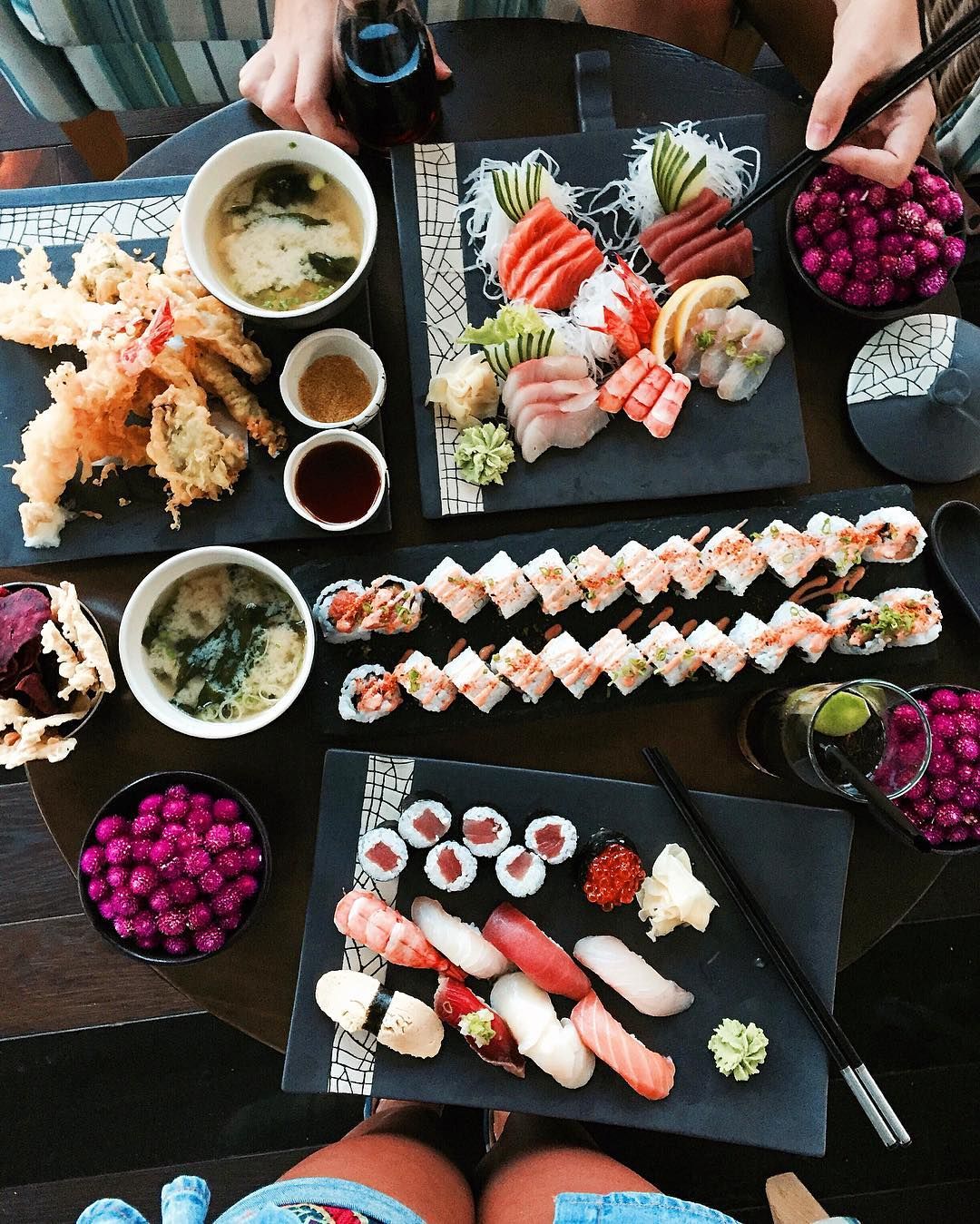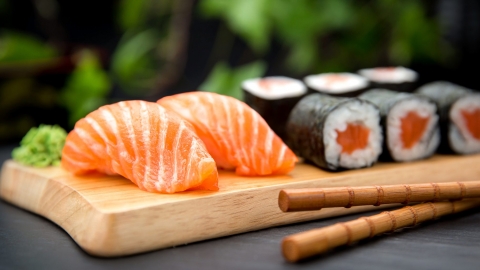Japan is a country surrounded by the ocean. The sea of Japan is famous for its rich and abundant seafood resources. This is the favorite source of ingredients for the Japanese to prepare dishes that are typical of the Japanese people and also the Japanese dish that is most known worldwide: sushi.
Japanese people eat sushi all year round, but each season they choose to enjoy different sushi dishes. Let's find out what ingredients Japanese people usually choose to make sushi each season!
Spring
In spring, Japanese people often eat five seafood sushi dishes: hama-guri, sayori, tori-gai, miru-gai and kisu.
Hama-guri is a hard-shelled sea clam. The clam meat is marinated, boiled, and placed on top of rice to make a delicious nigiri-zushi.

Hama-guri sushi
Sayori is a long, thin fish that lives along the coast of Japan. It has a strange shape with an oversized chin that looks like a sword. The fish meat is rubbed with salt and then washed with vinegar. There is often a little minced shrimp mixed with spices placed in the middle of the sushi to make the dish more attractive.

Sayori sushi
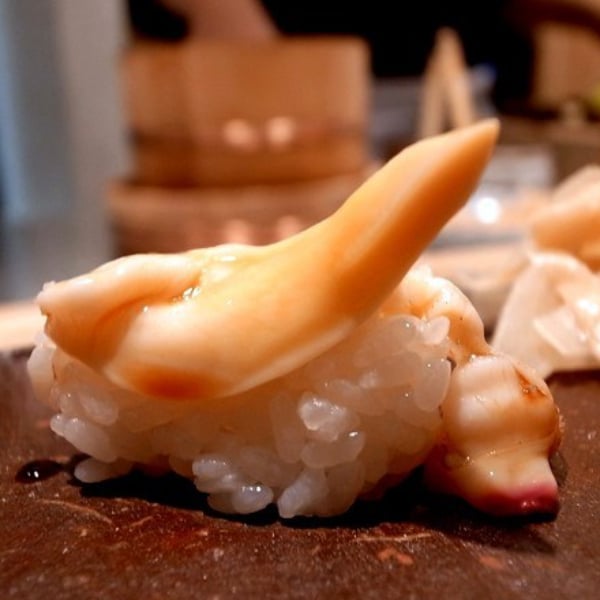
Tori-gai sushi
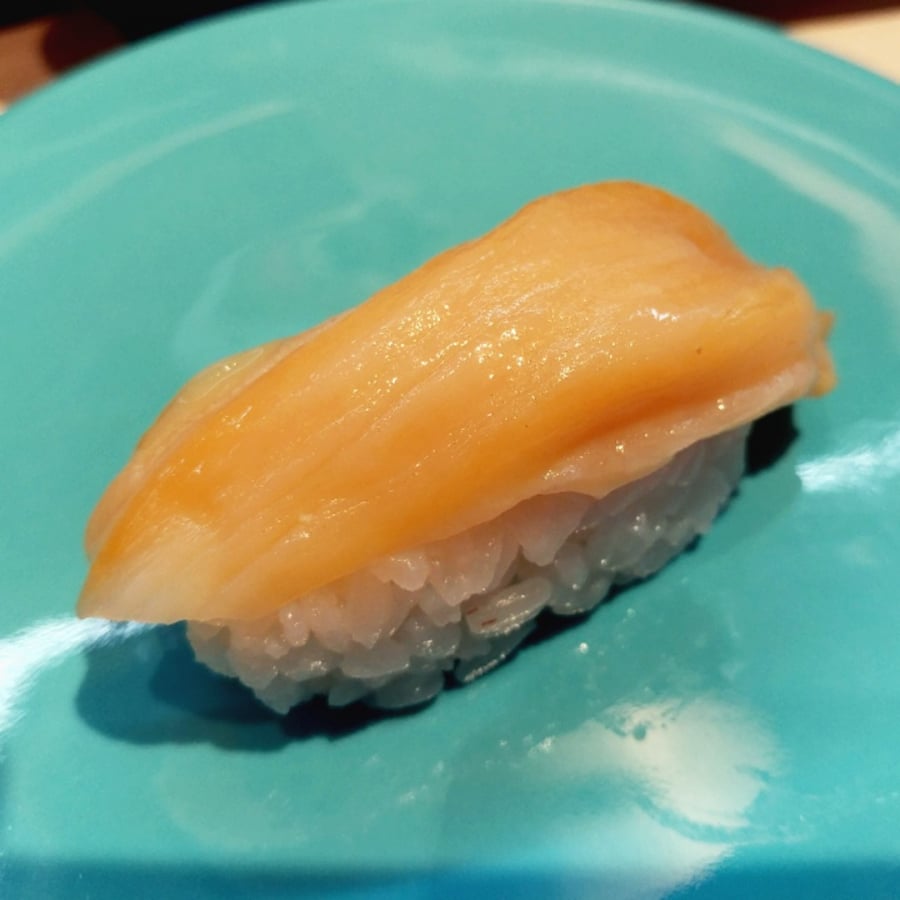
Miru-gai sushi
Tori-gai is a Japanese sea scallop. Underneath the shell, the scallop is purple and about 10 cm long. It is an ideal ingredient for making sushi because it has a sweet, fatty taste, lean meat and is rich in protein.
Miru-gai is the general name for shellfish such as shrimp, crab, clams, oysters, mussels, etc.
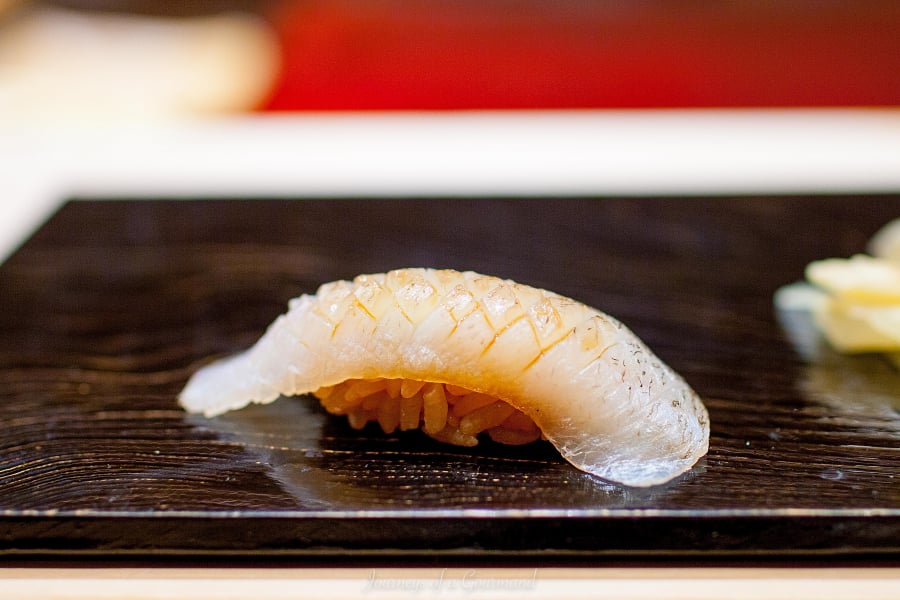
Kisu sushi
Kisu is a Japanese black sea fish that can be found anywhere along the coast of Japan except in the waters of Okinawa. The meat of this fish is white, very delicious and sweet. In addition to being used in sushi, kisu is also delicious when prepared with oil, such as in Tempura.
Summer
In summer, Japanese people often make four seafood sushi dishes: awabi, suzuki, anago and aji.
Awabi is abalone, a seafood that is known to be delicious and nutritious but quite expensive. There are many ways to prepare awabi in sushi: it can be eaten raw, steamed or boiled…all are very suitable.
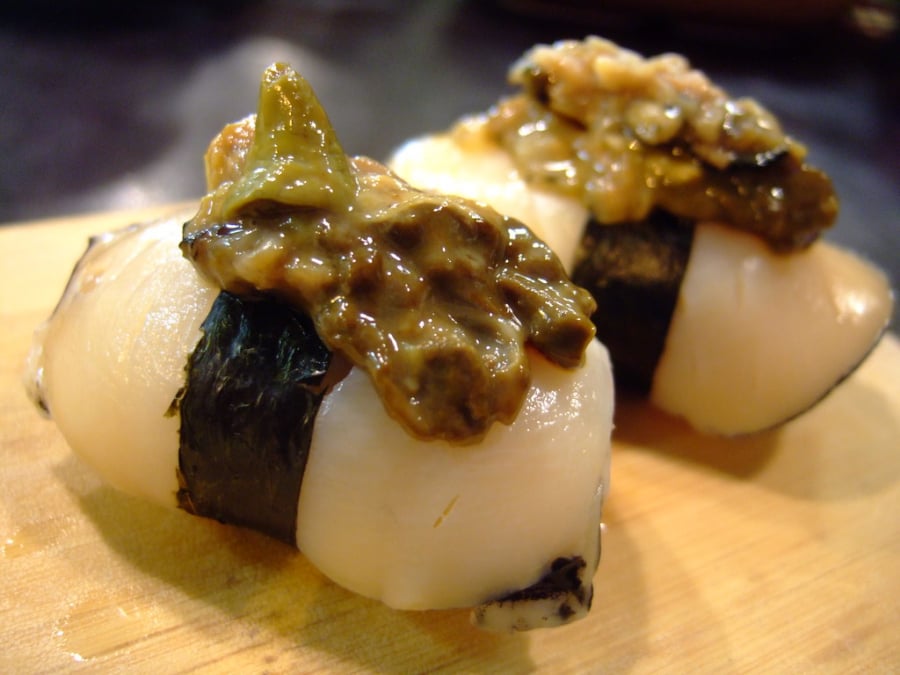
Awabi sushi

Anago sushi
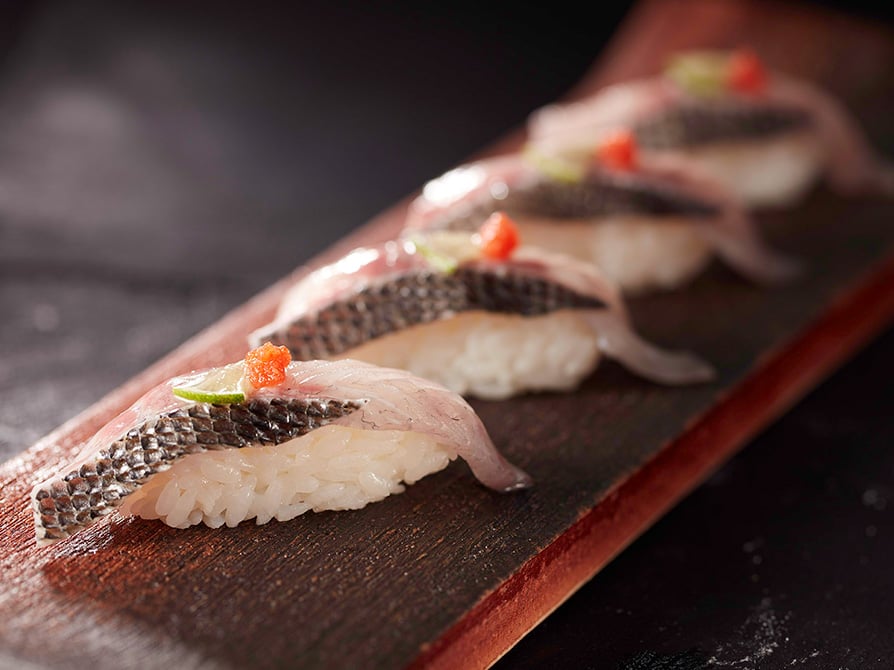
Suzuki sushi
Suzuki is a sea bass, a very popular fish in the world. Suzuki tastes best in the summer and is often used for sashimi and sushi in Japan.
Anago is a Japanese conger eel, also known as sea eel. This is a seafood that is very popular in Japan. Compared to freshwater eel (unagi), anago is less oily and has less fatty taste. Sea eel is often boiled to make sushi.
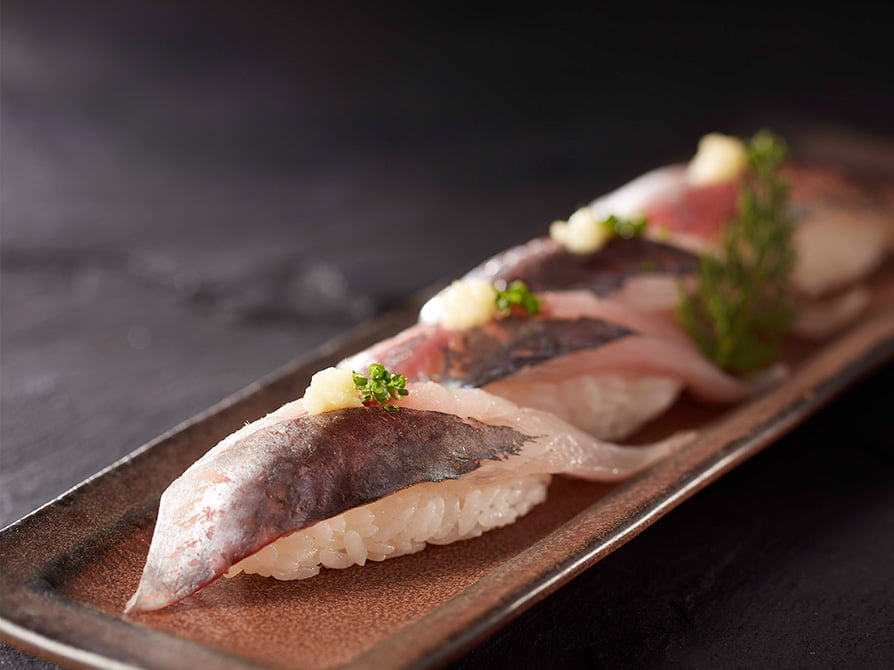
Aji sushi
Aji is Japanese tuna. The fish is washed with vinegar and then marinated with spices to enhance the flavor of the fish. Ginger and herbs are often placed in the center of the sushi to add color and flavor to the sushi.
Autumn
In autumn, Japanese people eat three types of sushi: kampachi, kohada and saba.

Kampachi sushi
In Japanese, the name of this kampachi fish changes as it grows: hiramasa (summer when the fish is young), kampachi (autumn) and finally buri (winter). This kampachi fish has a high content of omega 3 fatty acids which are very good for human health.

Kohada sushi
Kohada is a spotted sardine or herring. Sushi made from kohada is very popular and is also known as the “king” of edomae sushi. Like kampachi, the name of this fish changes according to its size: shinko (spring, when the fish is small), followed by kohada (summer), nagazumi (autumn), and finally konoshiro (winter). Of these, shinko is the most expensive, because as it gets bigger, kohada becomes bonier and harder.
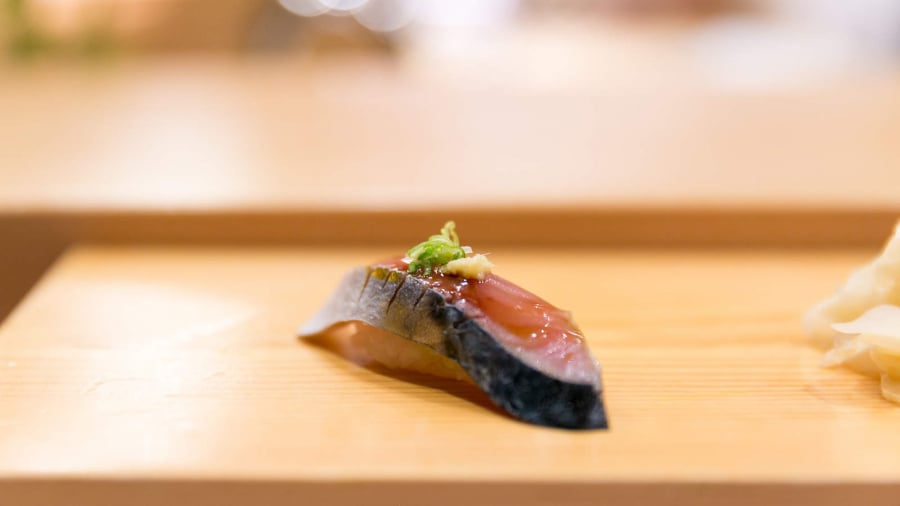
Saba sushi
Saba is mackerel. When used for sushi, the fish is often marinated with spices and vinegar. The vinegar helps to enhance the fatty taste of the fish and reduce the fishy taste when eaten raw.
Winter
In winter, Japanese people eat seafood sushi dishes such as ika, aka-gai, hirame and tako (made from octopus).
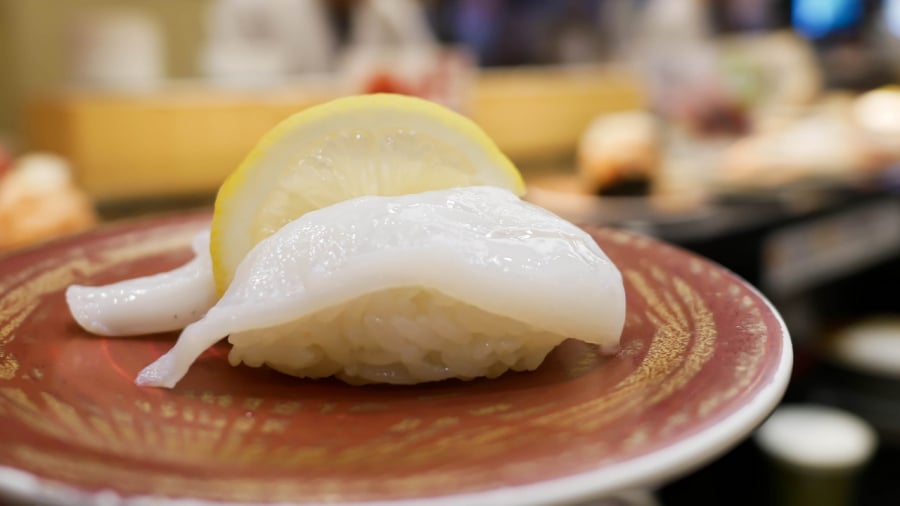
Ika sushi
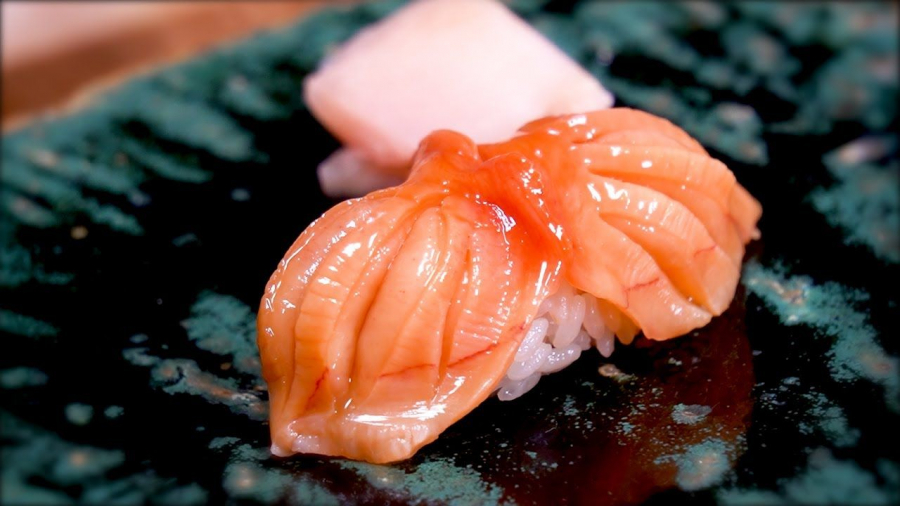
Aka-gai sushi
Ika is squid, which can be prepared in a variety of delicious sushi dishes, such as nigiri-zushi, which consists of a thin slice of squid placed on top of a rice ball. Ika can be prepared in the traditional edomae style, where rice is mixed with kampyo (dried pumpkin), seaweed, and yuzu (citrus peel), all stuffed inside a squid, which is then cut into bite-sized pieces. The unique sushi is called inrō-zume.
Aka-gai is a large sea clam. With its distinctive color and sweet, soft meat, aka-gai sushi is a popular choice.

Hirame sushi
Hirame is flounder. After being processed, the fish meat is thinly sliced and placed on top of the rice ball. Usually, there will be a little soy sauce and a few drops of lemon juice sprinkled on top of the fish meat to bring out the fresh taste of the fish.
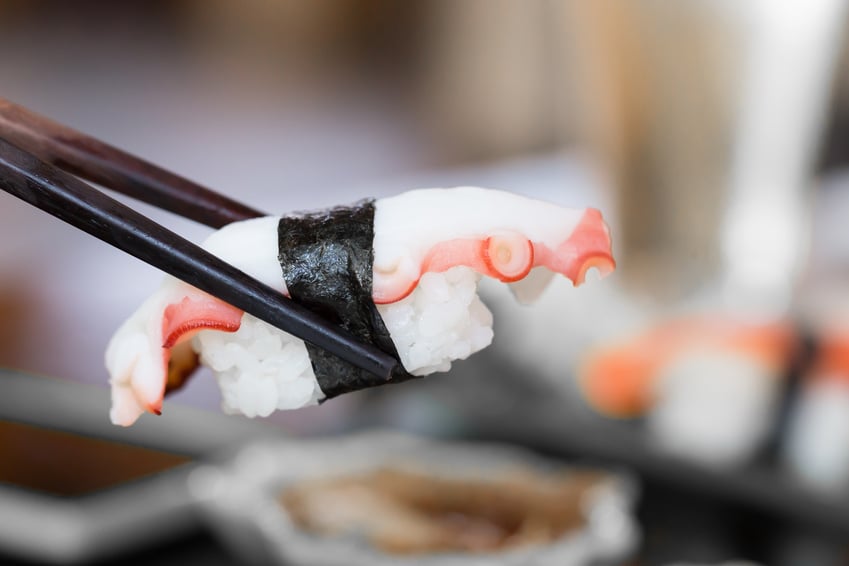
Tako sushi
Tako is octopus. In edomae sushi, octopus meat is boiled in salt water, sliced thinly and placed on top of the rice ball. When enjoying this type of sushi, you need to chew a little bit to feel the sweetness of the sushi.
Other types of sushi during the year
In addition, there are also sushi dishes eaten all year round such as: uni, maguro, kuruma ebi, tamago and kampyo-maki.

Uni gunkan-maki
Uni is a sea urchin, with a rather strange shape with a round body and long spines like a land urchin. People often use the yellow meat inside the sea urchin to prepare food. Sea urchins are often used to make gunkan-maki (a type of sushi with rice wrapped in seaweed).
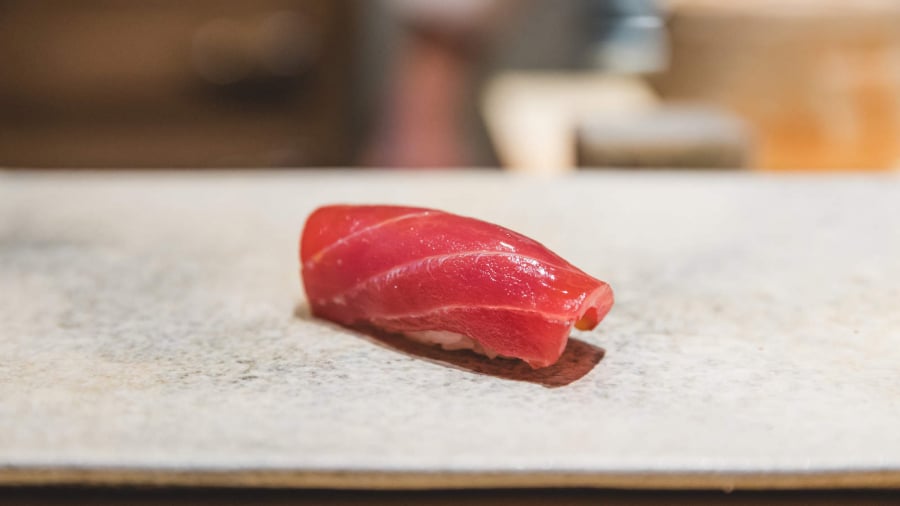
Maguro sushi
Maguro is tuna. With its bright red flesh, sushi made from tuna looks delicious, right? Moreover, tuna meat is lean, low in fat, very delicious and nutritious. This is also a common ingredient for making sushi.

Kuruma ebi sushi
Kuruma ebi is lobster, which can be enjoyed raw or boiled, after which the shell is peeled and a slit is made along the belly. Rice is placed in the middle of the slit. Nigiri-zushi is ready.
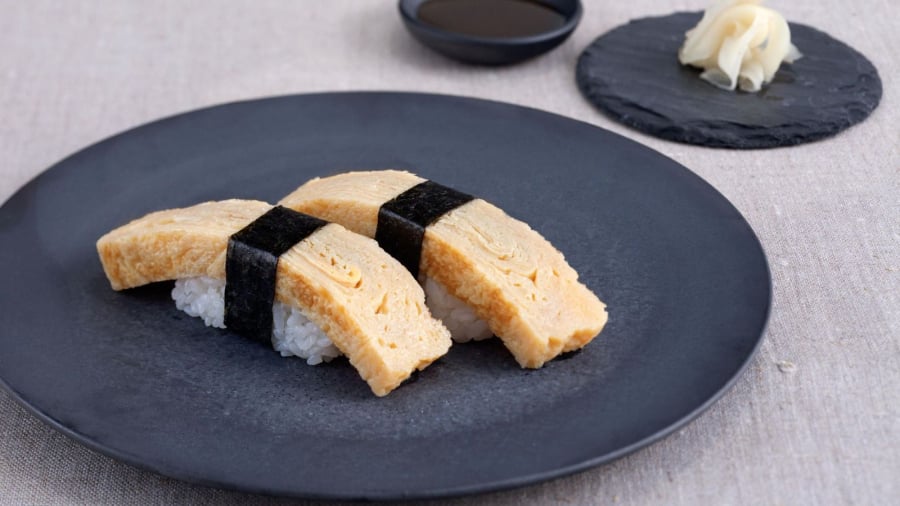
Tamago sushi
Tamago is sushi prepared with omelette. The golden omelette is combined with rice balls and presented in many beautiful and unique forms, making sushi with tamago very attractive.

Kampyo-maki
Kampyo-maki is a rolled up squash. Dried squash is soaked in water until it expands and is then wrapped in seaweed and rice. Can you guess which type of sushi kampyo-maki is? It is hosomaki, a type of sushi roll that uses only one ingredient rolled in rice and seaweed.





